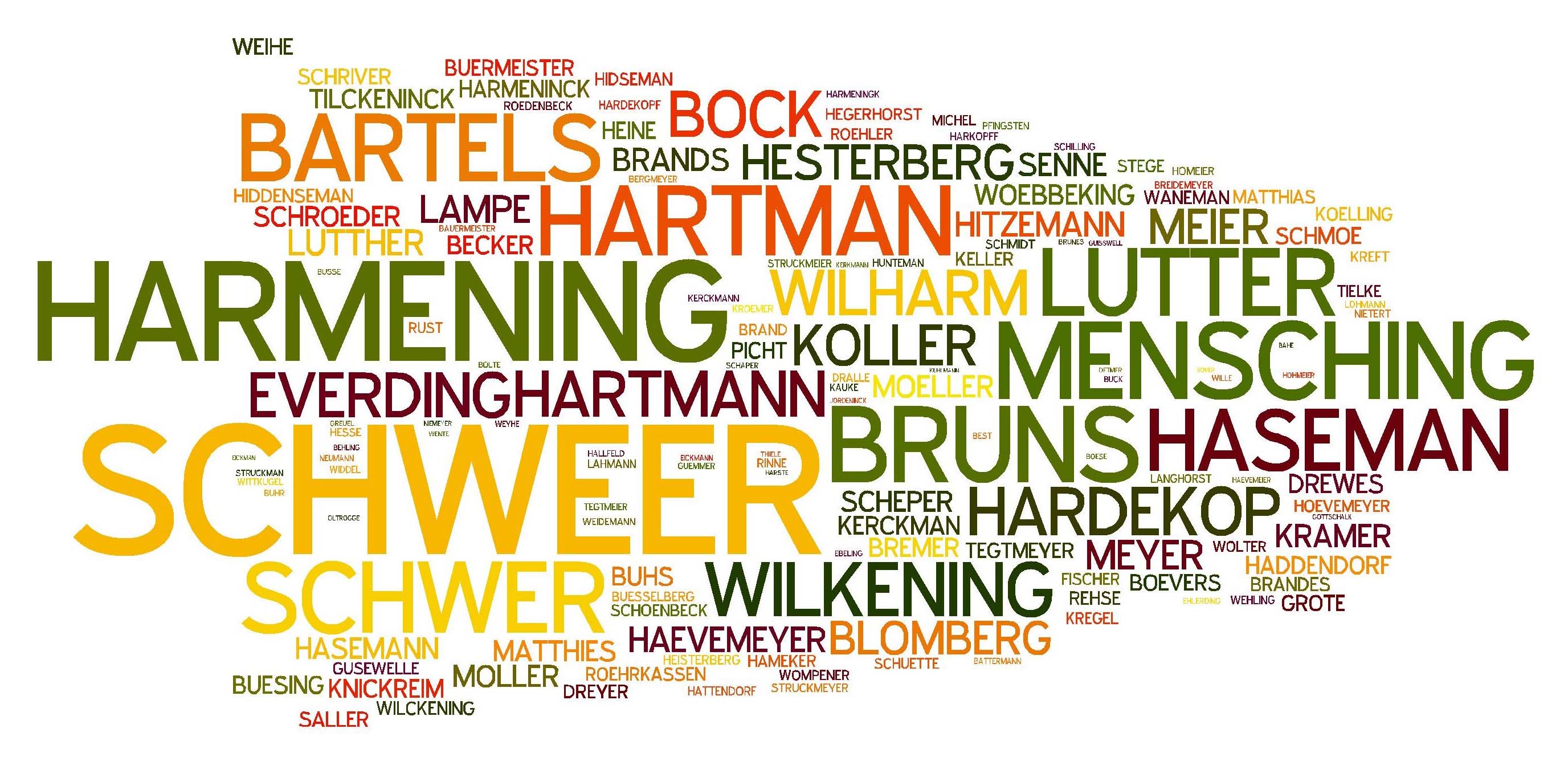I have tried to be as faithful as possible to Kurt Hitzeman’s lists. I began the work with the 2002 list and a database that had been created by Kurt for his initial version but which did not include the improvements that he had made in his 2002 list. So I worked through the 2002 list and updated the database from it.
This revealed the need to fabricate family numbers for various situations. These all begin with the letter X, which can be thought of as being eXternal to the Probsthagen records.
- There were families in the database that were not in the list or that were implicit within the comments on other families that were in the list. I began fabricating these as XY families, e.g. XYH01. But then I also used XX for these.
- There were families in the list that had no numbers. I began fabricating these as XX families (e.g., XXW01). However, this use of XX blurred into including families that were already in the database but not in the list.
- There were marriages or relationships that were impicit families in the text. (I think that I began fabricating these as XZ families and then XW when I had more than 99, e.g., XZB99 was followed by XWB01.)
Note that the XZX families are in the Probsthagen records, but the surname could not be read or was not given (e.g. "ein soldat").
Unfortunately, I had to do the work in fits and spurts, and my ability to remember the conventions that I established wavered. So I am sure that any convention that I had established has exceptions.
In 2005, I had to set the work aside for three years. I had completed the pass through the entire 2002 list and was using Legacy Family Tree software’s exception reporting to highlight problems that neither Kurt nor I had seen. I had nearly completed all of these problem report cases when I had to set the work aside until 2008.
During that time, Kurt made major enhancements in creating the 2007 list, including renumbering of many groups of families, something that the data itself really had indicated was needed. Thus when I resumed work in 2008, I began all over again, working from the A’s to the Z’s. This was a good proof-reading effort for Kurt’s list, but the real purpose was to bring synchronize the database with the 2007 version of the list. Before beginning this effort, I made a global change to the database to change any pre-1805 birthdates that were specific dates into baptismal dates, since that was what they really were. Unfortunately, this change also changed the birthplace to the baptismal place, which is not true for many of the people who were born in places that were not where they were baptized.
It is highly likely that there are some things that I may have missed in the 2008 work. For example, I think the most likely type of thing that I may not have spotted is that Kurt had added a specific house number to many of the families, so that I very well may have missed some of these. And the conventions that I had established in the earlier work may have been further distorted in the 2008 work.
What Kurt has done is a phenomenal effort, as anyone who has ever worked with hand-written German records in the altschrift (old script). The work I did was a massive effort of hundreds and hundreds of hours. But I am sure that the size of my effort it is dwarfed by the magnitude of the work that Kurt did. We all owe him an enormous debt of gratitude for undertaking such a massive but significant project. It is now one of the true wonders of the world of historical research.

 Send E-mail to wwjohnston01@yahoo.com
Send E-mail to wwjohnston01@yahoo.com